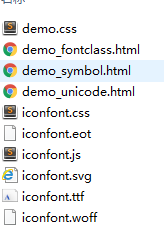字体系列
【1】5种通用字体系列:拥有相似外观的字体系列
serif字体:字体成比例,且有上下短线(衬线字体),包括TimesGeorgiaNew century Schoolbook
sans-serif字体:字体成比例,且没有上下短线(无衬线字体),包括HelveticaGenevaVerdanaArialUnivers
Monospace字体:字体不成比例,等宽字体,包括CourierCourier NewAndale Mono
Cursive字体:手写体,包括Zapf ChanceryAuthorComic Sans
Fantasy字体:无法归类的字体,包括WesternWoodblockKlingon
【2】特定字体系列:具体的字体系列
font-family:"宋体"; font-family:"arial";
【3】默认字体系列
chrome/opera:"宋体"
firefox:"微软雅黑"
safari/IE:Times,"宋体"
font-family:字体系列1,字体系列2 …… //【注意】若浏览器识别第一个字体,则以第一个字体显示;如果不识别,则尝试下一个。 font-family: arial,“宋体”,“微软雅黑”; //【注意】若写英文字体,一定要把英文字体写在前面,英文字体会影响到英文、数字和标点符号。 font-family: Times, 'New Century Schoolbook','New York', serif; //【注意】若字体名中有一个或多个空格,要添加引号
【4】中文字体
对于中文字体来说,常见的是宋体和微软雅黑。宋体是衬线字体,而微软雅黑是无衬线字体。衬线字体常用于排版印刷,而无衬线字体则常用于网页中
一般地,一行中有30-40个文字时,行高为1.5时,有较好的阅读体验。对于标题来说, 更好的样式是取消其加粗设置,并改变其颜色,增加页面的层次感
字体加粗
【1】常用值
font-weight: normal(正常,默认)
font-weight: bold(加粗)
【2】所有值
normal(正常)/bold(粗体)/bolder(更粗)/lighter(更细)
100/200/300/400/500/600/700/800/900 (100为最细,900为最粗)
字体大小
【1】绝对字体大小
xx-small/x-small/small/medium/large/x-large/xx-large
【2】相对字体大小
smaller/larger
【3】em/%
1em = 100%
【4】默认字体大小
chrome/firefox/opera/IE/safari:16px
【5】最小字体大小
chrome:12px
opera:9px
safari/IE/firefox:无
font-size
font-size字体大小设置的是字体中字符em框的高度,实际的字符字形通常比字符em框要矮,与字体类型有关
值: xx-small | x-small | small | medium | large | x-large | xx-large | smaller | larger | <length> | <percentage> | inherit
初始值: medium
应用于: 所有元素
继承性: 有
百分数: 相对于父元素的字体大小font-size
字体风格
font-style: normal(默认) font-style: italic(斜体) font-style: oblique(倾斜)
字体变形
font-variant:normal(默认)
font-variant:small-caps(小型大写字母)
行高
line-height: normal(默认)
line-height: 具体值
字体
font: [[<font-style> || <font-variant> || <font-weight>]? <font-size>[/<line-height>?<font-family>]
[注意]对于font-size,百分数相对于父元素来计算;对于line-height,百分数相对于元素的font-size来计算
关键字
CSS标准定义了6个系统字体关键字:
caption: 由标题控件使用的字体样式,如按钮和下拉控件 icon: 系统图标所用的字体样式,如文件夹和文件图标 menu: 下拉菜单和菜单列表中文本使用的字体样式 message-box: 对话框中文本使用的字体样式 small-caption: 由标题小控件的标签使用的字体样式 status-bar: 窗口状态条中文本使用的字体样式
font-face
@font-face { font-family: 自定义名称; src: url(../font/test.eot); src: url(../font/test.eot?#iefix) format("embedded-opentype"), url(../font/test.woff) format("woff"), url(../font/test.ttf) format("truetype"), url(../font/test.svg#jq) format("svg"); } //EOT:IE专用;WOFF:标准;TTF:最常见(safari/android/ios);SVG:图形格式(IE和firefox不支持)
两种调用字体的方法
【1】html(&#x + 小图标对应的unicode编码)
div{ font-family: 自定义名称; -webkit-font-smoothing:antialiased;//字体抗锯齿、光滑度属性 -mox-osx-font-smoothing: grayscale;//字体抗锯齿、光滑度属性 } <div></div>
【2】css( + 小图标对应的unicode编码)(不兼容IE7-浏览器)
div{ font-family: 自定义名称; -webkit-font-smoothing:antialiased;//字体抗锯齿、光滑度属性 -mox-osx-font-smoothing: grayscale;//字体抗锯齿、光滑度属性 } div:before{ content: "f048"; } <div></div>
【实例】
下面以一个实例来说明如何使用字体图标,最终的效果如下
一般地,使用国内的iconfont网站来寻找需要的字体图标,如晴、阴、雨、雪图标,将其新建为一个项目,并将项目文件下载到本地。下载的文件中包含了需要的字体文件及使用范例

最终代码如下
<!DOCTYPE html> <html lang="en"> <head> <meta charset="UTF-8"> <title>Document</title> <style> @font-face { font-family: 'iconfont'; src: url('font/iconfont.eot'); src: url('font/iconfont.eot?#iefix') format('embedded-opentype'), url('font/iconfont.woff') format('woff'), url('font/iconfont.ttf') format('truetype'), url('font/iconfont.svg#iconfont') format('svg'); } .weatherBox input{ position: absolute; clip: rect(0,0,0,0); pointer-events: none; } .weatherBox label{ font-family: 'iconfont'; -webkit-font-smoothing:antialiased;//字体抗锯齿、光滑度属性 -mox-osx-font-smoothing: grayscale;//字体抗锯齿、光滑度属性 } .weatherBox label + label{ margin-left:10px; } .weatherBox label:hover{ color: lightblue; } .icon-sunny:before { content: "e601"; } .icon-snowy:before { content: "e603"; } .icon-cloudy:before { content: "e605"; } .icon-rainy:before { content: "e606"; } </style> </head> <body> <div class="weatherBox"> <label class="icon-sunny"> <input type="radio" name="weather" id="sunny">晴 </label> <label class="icon-cloudy"> <input type="radio" name="weather" id="cloudy">阴 </label> <label class="icon-rainy"> <input type="radio" name="weather" id="rainy">雨 </label> <label class="icon-snowy"> <input type="radio" name="weather" id="snowy">雪 </label> </div> </body> </html>